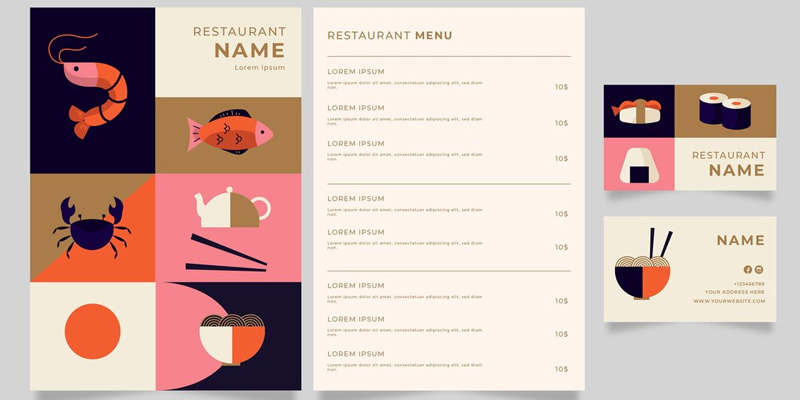5 Ways to Leverage Big Data to Design Social Media Posts for Educational Institutes

Featured Image: freepik.com/pch.vector
Educational institutions are always looking for creative and innovative ways to improve their social media presence to attract their target audience and engage with them successfully. For some time now, colleges and universities have been leveraging the power of big data to enhance their online presence through social media channels.
What is Big Data?
Big data refers to complex and large datasets from online platforms where people interact, such as social media platforms. It is the collection of qualitative and quantitative data from websites, emails, video sites, etc.
Management Consultant Geoffrey Moore said, “Without big data analytics, companies are blind and deaf, wandering out onto the web like deer on a freeway.” The same is true for educational institutions.
According to Maryville University, there are some key uses for big data, such as:
- It helps make projections for future enrollments of prospective students.
- It helps in tailoring curricula and tests using the latest techniques.
- It helps to align academic experiences with students’ interests.
- It helps to identify the causes behind student dropout rates.
Thus, there are many ways in which big data helps, but in this article, I will focus on how it can improve social media marketing for educational institutes.
What are the Types of Social Media Marketing?
Well, there are two types of social media marketing:
- Paid social promotion and ads
- Organic social media posts
Gartner states, “Paid social is the practice of displaying sponsored advertising content on third-party social networking platforms.” It involves creating and sharing ads that target specific audiences. Paid social media raises brand awareness, generates leads, and drives conversions.
On the other hand, organic social posts are just as important as paid posts, in fact, even more. These posts are a great way to reach and build relationships with target audiences. Hootsuite states, “Organic social media refers to the free content that all users, including businesses and brands, share on their feeds.”
How Can Big Data Help Educational Institutes with Social Media Strategy?
Big data can help educational institutes with social media strategy in several ways. Following are a few benefits to note.
Big data gives insights into preferences and interests.
- Big data collection and analysis provide helpful insights into their follower’s preferences and interests, allowing them to create and curate posts that educate and garner valuable leads.
Big data can help with content personalization.
- Moreover, big data can aid educational institutions in understanding and tailoring topics that resonate with their audiences. These academies, colleges, and schools can grab attention and encourage engagement by designing informed and relatable posts.
For example, Purdue University uses big data to track student interaction with their posts in order to identify the challenges and opportunities for improving their social media feed.
Big data can help examine online user behavior.
- Furthermore, big data analytical tools can examine user behavior to capture potential growth and sustenance opportunities for universities and colleges in an ever-evolving technological and competitive landscape.
In this article, I will review five ways educational institutions can use big data metrics and audience insights to create appealing and interactive social media posts.
- Analyze User Interests, Preferences, and Behavior
- Track User Engagement Metrics in the form of KPIs
- Identify Optimal Social Media Posting Time
- Create and Curate Personalized Online Content
- Monitor Brand Credibility and Reputation
Let’s examine each in more detail.
1) Analyze User Interests, Preferences, and Behavior
Analytical tools come in handy when educational institutes need to track the following:
- What interests their existing and prospective students or parents
- What do they prefer to watch, learn, and discover
- What is their online surfing behavior, like their pathway to lead pages
Data analytics powers success on social media. Large datasets about user (student) interests, preferences, and behavior help keep up with the pace and creativity at which content is added to social networking websites.
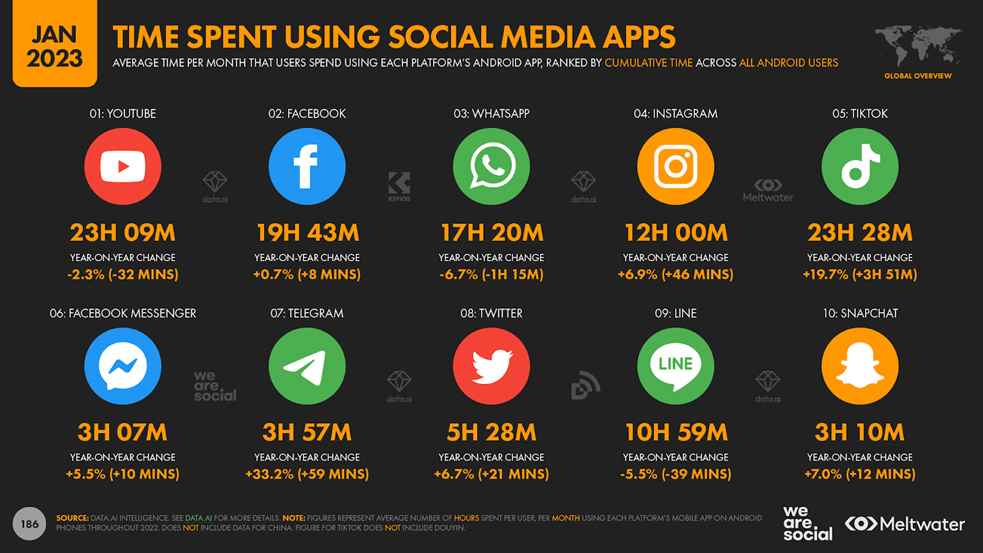
Image Source: meltwater.com
Considering the amount of time people spend on social media platforms, it is no doubt that the internet is filled with heaps of content every minute—content such as posts, visuals, and comments.
With the help of observing and analyzing online behavior, educational institutes can be where the students are. According to a 2022 Pew Research study, two-thirds of gen-z use TikTok, which is why colleges and universities in the United States post content on the platform and reshare it on Instagram.
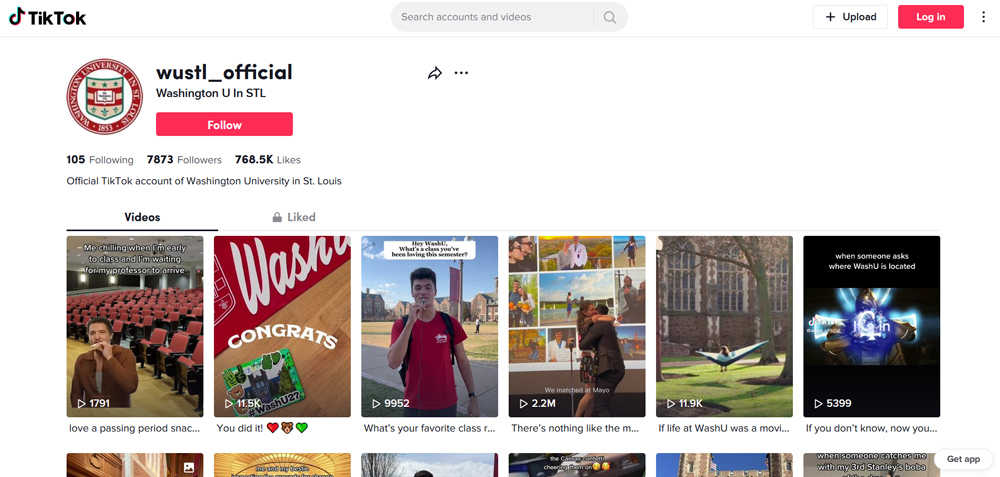
Image Source: tiktok.com/@wustl_official
Washington University, for example, posts videos about students’ and teachers’ lives on social media to appeal to the youth.
2) Track User Engagement Metrics in the form of KPIs
Nowadays, with comprehensive data analytics tools, educational institution marketers can quickly check monthly, quarterly, and yearly key performance indicators (KPIs).
What is KPI? It’s a quantifiable measure of online activity and engagement in the form of impressions, views, clicks, followers, and comments. Marketers should embrace it in social media marketing.
Colleges and universities can develop better social media marketing plans by keeping track of some key performance indicators. They can also:;
- Increase community engagement
- Boost website traffic with the right CTAs
- Generate more prospects and leads
- Develop attractive, powerful, and helpful content
- Raise brand awareness
Remember, when picking KPIs for your school, college, or university marketing, make sure your goals are SMART (specific, measurable, achievable, relevant, and time-bound).
3) Identify Optimal Social Media Posting Time
Time is of the essence in social media marketing. You cannot afford to lose it or waste it. Educational institutes improve their social media posting by analyzing the right time students, in particular, use specific channels at certain times.
You can follow these steps to identify the optimal social media posting time:
- Collect data on your posts using tools like Google Analytics, Sprouts Social, and Hootsuite.
- Identify trends and patterns in how users have engaged with your posts, and understand the factors influencing this engagement.
- Use machine learning algorithms to identify your educational institution’s optimal social media posting time.
- Experiment with different posting times for better engagement and leads. Use A/B testing to compare metrics on posts sent at different times.
- Monitor your social media metrics monthly, quarterly, and yearly to keep track of your efforts. It helps you to increase quality engagement and follower count.
It is an ongoing process, so never stop or get bored with it.
4) Create and Curate Personalized Online Content
With useful data about your target audience, you can create and curate personalized content online. This content can consist of textual posts or ones with visuals like photographs, memes, infographics, and videos.
Data on demographics and psychographics gives insights into people’s desires, preferences, and needs. Educational institutions can inspire, motivate, and educate their audience with such data.
Know that sharing your content is only a part of social networking. The other major part is to curate high-quality content from other resources on your feed and tag them to build a community of collective learning.
Here are some nifty tips:
- Give context to every curated post. This means don’t just reshare it, but share it with a thought.
- Balance your social media feed with original and curated posts. Make sure whatever you share is customized or relevant, at least.
- Post answers to the most commonly asked questions regarding education, student life, activities and organizations, athletics, arts and culture, courses, and faculty.
- Take advantage of the opportunity to add calls to action in your content. Ask people to do different activities, like
- Sign up for a newsletter
- Request a demo
- Download an eBook
- Link to a landing page
- Ask to vote
- Encourage to share a branded hashtag like #PrincetonU
- Share event pictures and videos for prospective students to see what happens in the school besides text-bookish education.
- Use social media channels like Twitter as a message board and dedicate a specific hashtag for this chat.
- Use Instagram for digital storytelling. Invite students to share photos and videos, which you can upload on your feed.
- Create Facebook groups based on different interests and allow the community to take part in posting content.
How to curate your social media feed depends on the data you collect about your educational institution, audience, and competition.
5) Monitor Institution’s Credibility and Reputation
Whatever you post online is linked to your brand image. This is why institutes and organizations must take their social media activity seriously.
Thus, monitoring your institution’s credibility and reputation is necessary for today’s evergrowing educational landscape. With the help of big data collection, analysis, and implementation, institutions can garner valuable insights about customer feedback, social media recommendations and mentions, and other relevant indicators of credibility and reputation.
Here are some grabbable tips:
- Monitor mentions of the institutions in terms of backlinks, tagging, and recommendations. This will help you identify good and bad comments so they can be instantly replied to or addressed.
This is not a mention but a negative comment that should be addressed immediately in an appropriate way.
- To build and maintain a good reputation, you need to be aware of what is good and bad in the online world. Thus, checking out what your competition is doing will help you monitor the best and worst practices of the market. With such information, institutions can stay ahead of their competition.
- In order to build a certain brand image online, educational institutions need to identify their respective audiences to create and share relevant posts. Institutions can enhance their brand reputation by focusing on audience loyalty and satisfaction.
- Amongst these above-mentioned ways, it is very important to track what people say about your institution among their circles. Observe and analyze feedback, reviews, and conversations. After all, what people say behind your back matters most.
With big data analysis, educational institutions can monitor their reputation online in real-time and take steps to maintain a positive and inspiring image.
Wait … there’s more.
Last-Minute Ideas to Design Social Media Posts For Educational Institutes
Designing Tips
Designing is an essential part of social media marketing. It makes posts visually attractive when graphic design elements and principles are implemented. When designing social media posts, make sure you focus on aesthetics. This means you must ensure the design style and appearance is good enough to grab and retain attention.
Know that social media platforms are full of content from around the world. The way to succeed with social media marketing for your educational institution is to make a design plan. Know what kind of posts you will design for the quarter or the year and consistently follow it. This way, people will know the posts are from you even if they’re reshared without any mention.
To ensure you’re meeting the mark, stay updated about design trends. You don’t want a progressive educational institution to look outdated and dull. This is why you need to make sure you to what clicks with your target audience and design accordingly. Give them what they want and sometimes surprise them.
- Use online design tools to make quick and attractive social media visuals.
- Use color palette tools to decide the right hues for your institute marketing.
- Maintain consistent aesthetics to form a social media theme.
- Always add your branding to visuals like the education institute logo.

Image Source: ZillionDesigns

Image Source: ZillionDesigns

Image Source: ZillionDesigns

Image Source: ZillionDesigns
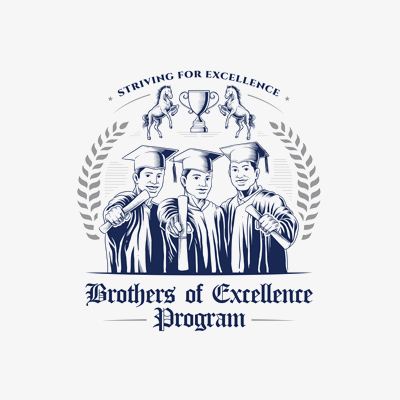
Image Source: ZillionDesigns
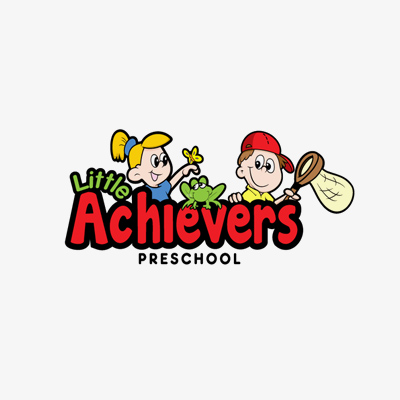
Image Source: ZillionDesigns
- Design kickass banner for all your social media accounts.
- Pick a readable typeface for visuals like images and videos.
- Avoid cluttering visuals with too much information in one post.
- Design for the platform – YouTube videos, Instagram reels, and LinkedIn carousels.
Content Tips
Content is important as design is. In the world of education, visuals are not worth a thousand words. You must often accompany visuals with relevant text to make the most valuable. For example, a quote with Nancy Gozales’s photograph looks more effective than if only her picture were shared. So you see, the text is as needed as a visual to make a winning social media post for your educational institute. They can work separately and together. All you need to do is be able to present it appealingly.
Educational institutes can post many different kinds of content on social networking websites. The kind of content you post online depends on your educational institution, your target audience, and your content team.
Make sure to hire professional content strategists and copywriters so they can pull off a great copy for each post you share online. Ensure that each post is carefully curated, so it holds the potential to get maximum engagement and/or leads.
- Highlight the achievements of students, staff, and faculty members.
- Display pictures of extracurricular activities.
- Share posts about events like workshops, conferences, and seminars.
- Post tips for academic triumph like time management and study tricks.
- Share stories about alumni success – how they achieved their goals.
- Bring to the limelight your community services like environmental campaigns.
- Post some interesting and fun facts about the institution’s history and culture.
- Share information about course curriculum and admission requirements.
- Talk about social issues that concern people the most.
Technical Tips
Design and content often go hand-in-hand or separately, but educational institutions must ensure that the technicalities are met with utmost care. These technical tips will help you optimize your content on social media for maximum impressions and clicks.
Regarding social media marketing technicalities, you must read the policies shared by each social networking platform because there is useful information about what is accepted and what isn’t. A violation may seriously harm your account.
Follow the tips below to smoothen your social media posting journey.
- Always add relevant and branded hashtags to your posts.
- Optimize visuals with meta tags if they don’t load in some countries.
- Respond to messages, comments, and reviews on social media.
- Monitor analytics to track your social media performance.
- Include a call to action whenever you see the opportunity.
In conclusion, big data is a powerful tool for educational institutes to create and share attractive and effective social media posts that entertain, educate, and engage their target audience. With the collection, analysis, and evaluation, institutes can get insights into students’ and parents’ needs, wants, and behavior to tailor personalized posts.


